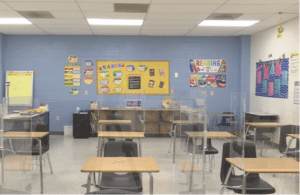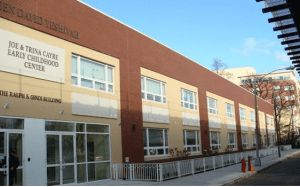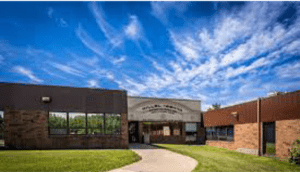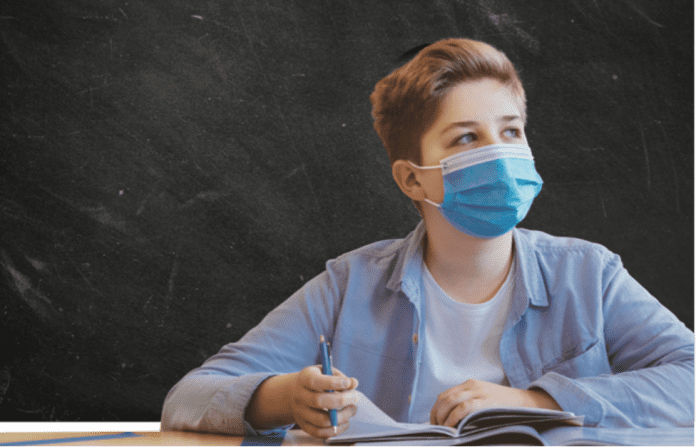Mozelle Forman
The COVID-19 pandemic is primed to make the 2020-21 school year as challenging – if not more so – than the last.
The dreaded virus padlocked nearly every school building last spring in an historic disruption of education. Schools were forced to shift overnight to distance learning, while parents and students struggled with the logistics and limitations of technology. The virus caught the world unawares, and throughout the summer, a fierce debate raged about the safety of opening the schools, versus the danger to the social and emotional needs of children should remote learning be mandated. And, like everything else connected to COVID 19, there are no hard and fast answers.
To Open or Not to Open?

The latest data on the pros and cons of opening schools, despite the recent rise in Covid cases, falls heavily on the side of reopening.
Both the World Health Organization (WHO) and the American Academy of Pediatrics “strongly advocates that all policy considerations for the coming school year should start with a goal of having students physically present in school.” The CDC states: “Aside from a child’s home, no other setting has more influence on a child’s health and well-being than their school.”
The sudden lockdown of schools in the spring led to numerous social, emotional and academic disruptions to students despite the schools’ best efforts to shift to online learning. For many students, long breaks from in-person education are harmful to academic achievement. For example, the adverse educational effects of summer breaks, known as the “summer slide,” are well-documented. Students can lose as much as 39 percent of their academic gains over the summer months. The prospect of losing several additional months of schooling, besides summer vacation, would likely have an especially severe impact on kids’ learning.
The CDC concludes that all “the available evidence provides reason to believe that in-person schooling is in the best interest of students, particularly when appropriate mitigation measures similar to those implemented at essential workplaces” are put into place.
These include, but are not limited to, social distancing, mask wearing, the ability to implement contact tracing, and enhanced sanitizing and disinfecting.
Citing scientific studies, the CDC states that “there have been few reports of children being the primary source of COVID-19 transmission among family members. This is consistent with data from both virus and antibody testing, suggesting that children are not the primary drivers of COVID-19 spread in schools or in the community.”
Additionally, children’s development of social and emotional skills is directly related to being physically in school. In an in-person school environment, children more easily learn how to develop and maintain friendships, how to behave in groups, and how to interact and form relationships with people outside of their family.
Community schools have risen to the challenge, committing themselves to meeting our children’s needs in the best possible way while ensuring to avoid, or at least minimize, the spread of the deadly COVID-19 virus.
“We Have to be Realistic”


One challenge schools are confronting is recovering the learning that was lost during the last several months of the 2019-20 academic year.
Mrs. Audrey Calvo, Assistant Principal of YDE Boys Middle School, acknowledges that remote learning in the spring may have affected the academic progress of students, but he believes that “the entire world is a little behind, so we are all at the same point, and eventually, all students will catch up.”
Standardized Achievement tests usually given at the end of the school year to assess progress were not administered at the end of the last school year, but are expected to resume in the spring of this year. For the current year, many teachers have been using assessment tools during the first few weeks of school to determine students’ progress – or lack thereof of – in order to revise curriculum. As one teacher put it, “We have to be realistic, [and realize] that we won’t get to everything on the usual schedule, and not get anxious about that.”
At Yeshivat Keter Torah, students are having two sections of math per day, to review and get caught up. Stephanie Kurtz, third grade teacher at Magen David Yeshivah, anticipates that there will be gaps in the achievement. “For the most part, we will still be teaching on grade level, and if a student needs more support, we will provide it.”
Safety First


Changes to classrooms and common areas were implemented, and some non-traditional learning spaces have been repurposed as classrooms.
For instance, a thermal temperature scanner has been installed at the entrance to the Hillel Yeshiva building, water fountains have been replaced with automatic and touchless water bottle filling stations at Magen David, and Keter Torah is now using the midrash to accommodate social distancing for its 8th grade. At Hillel, signs and directional guidelines (providing for one-way traffic where appropriate) and hand-sanitizing stations in common areas and in each classroom have been added, and the ventilation systems have been upgraded.
All the schools have added partitions, either to students’ desks or between the rows, with YDE adding a partition in front of the teachers’ desks, as well. Mrs. Calvo says, “This is a necessary step, but as good teachers do not sit at their desks, teachers will be wearing masks throughout the day.”
The CDC and WHO firmly believe that mask wearing reduces the spread of the virus, and all schools are adhering to this precaution, though there are different criteria for different age groups. Mask wearing on busses and in common areas is mandatory at all schools. Some schools require masks in the classroom all day with scheduled mask breaks, while other schools are dispensing with masks in the classroom when physical barriers are available. Some educators, while understanding the need for the masks, see a downside as facial expressions, a key element in connecting with each other, will be obscured. One Rebbe at Keter Torah explained to parents that while he would be adhering to strict social distancing in the classroom, expanding on the six-foot requirement, he would not be wearing a mask in the classroom, because he felt that students would not be able to gauge his reactions to their behaviors and see his pleasure when they participate.
Mrs. Calvo elaborates, “Although I am worried about my own health and welfare, and wear a mask and a face shield when visiting the classrooms, nothing can replace the joy a child feels when I smile at him and say, ‘David, 100 on the math test – way to go!’ The lack of facial connection will be a great loss this school year.”
Cohorting
In order to limit students’ exposure to each other, to adhere to requirements for social distancing, and to manage contact tracing, all schools have adopted a “cohort” model for students. According to the CDC, cohorting (sometimes called “podding”) is “a new term for a strategy that schools may use to limit contact between students and staff as part of their efforts to limit transmission of SARS-CoV-2 (the virus that causes COVID-19). These strategies work by keeping groups of students – and sometimes staff – together over the course of a pre-determined period of time. Ideally, the students and staff within a cohort will only have physical proximity with others in the same cohort.” This need for cohorts has necessitated many changes in the structure of classes.
The Magen David website explains the shift to single gender classes in grades 1-8. “In grades 4-8, we have typically separated boys and girls for Judaic studies. This year, with the need for cohorts, we will be keeping the genders separate for general studies, as well.”
Most schools have adopted the policy of students remaining in the same classroom each day, and where applicable, teachers rotate between cohorts. While in the past, classes have been separated according to skill level, at MDY and Hillel, middle school classes will be tracked rather than leveled for individual subject areas. This means that students will spend the day with the same cohort for all subjects, instead of switching groups every period.
Another major challenge is transportation, especially in light of the delay in the opening of NYC public schools. When bus service commences, all riders will be required to wear masks, and, as the Department of Education’s Office of Pupil Transportation states, social distancing guidelines must be enforced on the bus, significantly reducing the number of students who can be accommodated on one bus. This means that many more parents will have to carpool their children. Magen David’s advice to parents vis-a vis carpools is to adhere to class cohorts as closely as possible. In an announcement to parents, the school pleaded, “Please understand that in mixed cohort carpools, children will be considered ‘close contacts’ and, if there is a positive case within the carpool, each student in that carpool will be required to quarantine.”
The Question No One Wants to Ask
The question on everyone’s mind, but which many prefer to avoid, is, how many positive cases will warrant closing down again?
And the answer is an unequivocal, nobody knows for sure.
The CDC offers this advice: “Schools should be prepared for COVID-19 cases and exposure to occur in their facilities. Collaborating with local health officials will continue to be important once students are back to school, as they can provide regular updates about the status of COVID-19 in the community and help support and maintain the health and wellbeing of students, teachers, and staff.”
Magen David’s policy when becoming aware of a confirmed case is to identify close contacts (within six feet, for ten minutes or more) of a person with a probable or confirmed case of COVID-19, and to notify the NYC Department of Health in order to gather information for the purpose of contact tracing and resuming normal school operations as allowable by law.
The Hillel Yeshiva website clearly and succinctly outlines the policy: “The school’s new temperature screening system will flag anyone who exhibits a fever of 100 degrees Fahrenheit or greater, and that individual will immediately be sent to the Nurse’s office, where a second temperature will be taken. If the second temperature is also above 100 degrees Fahrenheit, that student will be sent home.” The protocol proceeds as follows:
- PERSON A: Any person who tests positive for COVID-19 –
Must quarantine for ten calendar days (or the amount of days then currently prescribed by the CDC) AND submit a negative test prior to returning to in-person school.
- PERSON B: Defined as an individual who has been within six feet of a confirmed COVID-19 case for a prolonged period of time (approximately 15 minutes), whether inside or outside of school.
- Close Contacts: In the event of a positive COVID-19 case in a cohort, that cohort (i.e. class, and including any close contacts on the bus) will transition to remote learning for ten calendar days. It is recommended that these individuals get tested for COVID as well, although a negative COVID test will not be sufficient reason to return to school before the end of the 10-day period.
- Family Members: Any family members (i.e. siblings) of a positive COVID-19 case (Person A) will also be required to quarantine and learn remotely for ten calendar days. Family members will be required to wait this ten-day period AND submit a negative test result before returning to school. Unless a sibling exhibits symptoms and/or tests positive as well, his or her class will remain in live session.
- PERSON C: Defined as contact with a Person B.
This would include the class members of a sibling of a person who tests positive for COVID-19. No special precautions are necessary for this group.
As much as reasonably possible, the plan – and the hope – is that entire schools will not have to be permanently shut-down. But if necessary, administrators and teachers alike are confident they will be able to accommodate students more effectively than they did in the spring.
A Sigh of Relief
Parents are experiencing an overwhelming feeling of relief that their children have returned to in-school learning.
Jeanne Eliahou, mother of four children, pre-school to 7th grade, says that “keeping the children home has definitely had a negative impact on their academic achievement. The stress of the children being home all day, without any social outlets for them or breaks for parents, has taken a toll. I understand that for some children there is a higher risk of being in school, but for the most part I think it is best for most children.”
A teacher with elementary school age children of her own believes that Zoom is not effective for learning. “There is a lot for me to wrap my head around as a teacher and parent – we are taking a necessary risk – and part of me is sad to see how it has to be. But it is vital that we get on with our lives as safely as possible.”
Mrs. Kurtz presented the following report after her first day of teaching in Magen David: “I noticed the typical first-day-of-school jitters – meeting the new teacher, learning about the classroom – not a ‘global pandemic’ fear. Overall, children are very resilient, and I believe they will be fine.”
With the safety measures put into place by our community schools, and with Hashem’s blessing, we hope and pray for everyone’s continued good health. We proudly salute and warmly thank our schools’ administrators, faculty and other staff members for their heroic efforts to fulfill the sacred mission of educating our precious children under these very difficult conditions, and we wish them and all students much happiness, health and success during what is certain to be a most unforgettable academic year.



